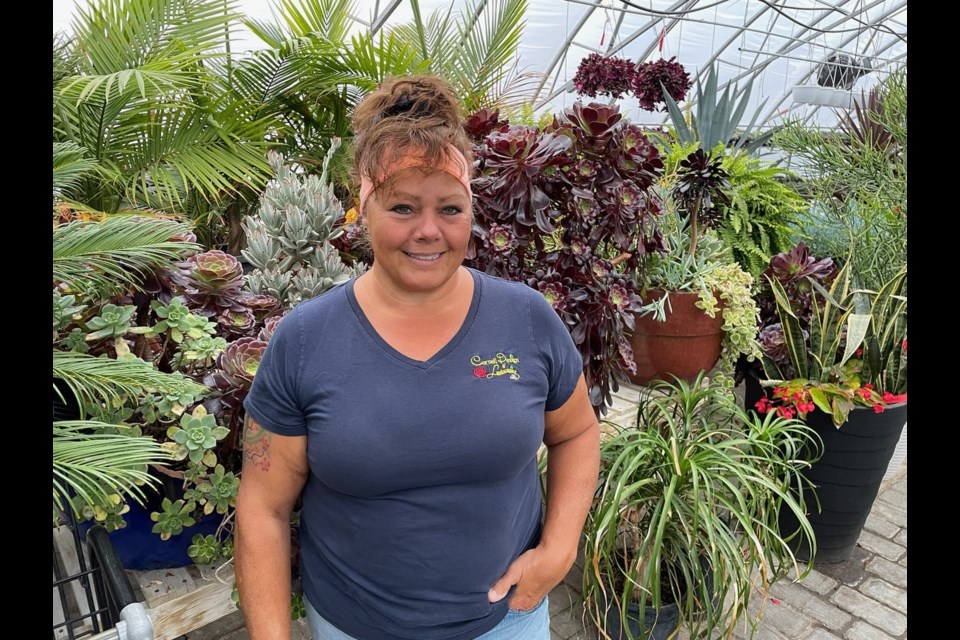As the weather cools, gardeners are faced with some of the biggest challenges of the season.
Leslie Cornell, owner of Cornell Design & Landscaping, is here to provide a few tips and tricks to help gardeners ensure the survival of their plants this winter.
Fall cleanup
Cornell Design & Landscaping has a yard care service to help with tedious fall chores.
Fall is a good time to trim plants and clean up flower beds. Some annuals can be left until they die back, but it’s good practice to remove a few each week and avoid a single last-minute effort.
The company’s snow removal service is perfect for homeowners and small businesses alike. It operates on an as-needed basis and is a good consideration after the next snowstorm.
“Some people can call us for a one-time service, and yet if you book for the season, you get a discounted rate,” Cornell said. There is also a 15 per cent labour discount for adults over the age of 55.
Insulation
The foremost challenge in winter is to adequately insulate outdoor plants.
Cornell said that any ground cover is a good idea, and many seasoned gardeners including herself like to apply leaves from the fall cleanup. Once applied, leaves should be watered and allowed to freeze, which keeps them in place and the ice helps insulate the roots.
If you don’t want to use leaves, peat moss is an ideal substitute.
Any exposed branches can be covered with burlap or Styrofoam. Roses are one example, and plants from higher zones are also a concern.
Overwintering trees and shrubs
With trees, the best practice is to wait for the first frost and then thoroughly water the base of the tree.
“Usually, a frost is not going to be terribly cold, like minus one or two. Even minus five is fine, because then it warms up again. As long as your ground is moist, it can freeze closed and not let air in (to the root system),” Cornell said.
Evergreens can bend under the weight of wet and heavy snow causing distorted branches. On a warmer day, branches can bend, and when the temperature plummets the branches are frozen into a new shape.
With a burlap cover or netting, the tree can be held together to prevent this contortion.
Another issue is sun scalding, which occurs when temperatures rise during the winter and results in exposed bark freezing. This can severely damage the tree.
Anything that reflects sun from the exposed portion of the plant is helpful.
When planting a new tree, it’s good practice to face low branches to the south in order to provide shade during the winter months.
Roses should not be pruned in the fall, as this can trigger new growth and cause severe damage as the cold sets in. A fresh cut can trigger growth and interrupts the plant from going dormant.
Create a microclimate
“Some people like to push another zone… Sometimes we have a good microclimate in the yard, and you can push zone four and have no problem doing it. I’ve seen people push a zone five reliably, and they do it every year because they have a great microclimate,” said Cornell.
To set up a microclimate, it’s mostly about selecting the right location.
Factors involved in microclimate design include temperature, light, wind speed, and moisture levels. If you can establish a local enclave separate from the surrounding environment, then you're likely to see a greater success rate in the survival of your plants.
Houseplants
Houseplants need more water as the furnace runs, because conditions grow dryer and warmer indoors.
“It’s all related to how much the furnace is running and making the air dry, and how much light they are getting,” explained Cornell. “If you have a grow light, then you can water as per normal.”
Fertilizing typically follows a watering schedule, and this is also affected by the season.
Succulents rest between October and early January, so watering can be cut back. Fertilizer should be applied at half of the typical dosage. When the plants spring back to life in January (or as per the plant), you can resume normal dosages.
Many people assume a south-facing window is the best location. This isn’t always true, Cornell warns. Certain plants thrive in shady conditions, and providing too much sunlight can cause sunburn.
The ideal location keeps the plant clear of heat vents and away from outside doorways. Cornell advises not to let the plants physically touch a window, as this will cause the plant to freeze.
Grow lights are an important consideration. Cornell advises eight to 12 hours during the winter and noted that plants tend to get around 16 hours in the summer. Don’t leave the lights running non-stop though, as plants require a daily period of rest.
Cutting arrangements
Late in the season, Cornell switches her focus to greenery pots designed to adorn the front step or walkway to your house, and they make the perfect gift idea.
The arrangements are made from fresh cuttings. These cuttings typically last from December through to early March when the weather starts to warm up, thanks to a latex polymer coating.
Cornell Design & Landscaping is open throughout the year. The greenhouse closes as weather turns cool around the end of September. In the spring, summer, and fall, the company maintains a Monday to Friday yard care service, and during the winter months snow removal is available as needed.
Yard care services are available until weather conditions change and is also based on demand.
The greenhouse is expected to re-open around Monday, April 1, 2024.
For confirmation on business hours, Cornell Design & Landscaping can be reached at 306-693-8733.
More information can be found on the company’s website at CornellTrees.com.




